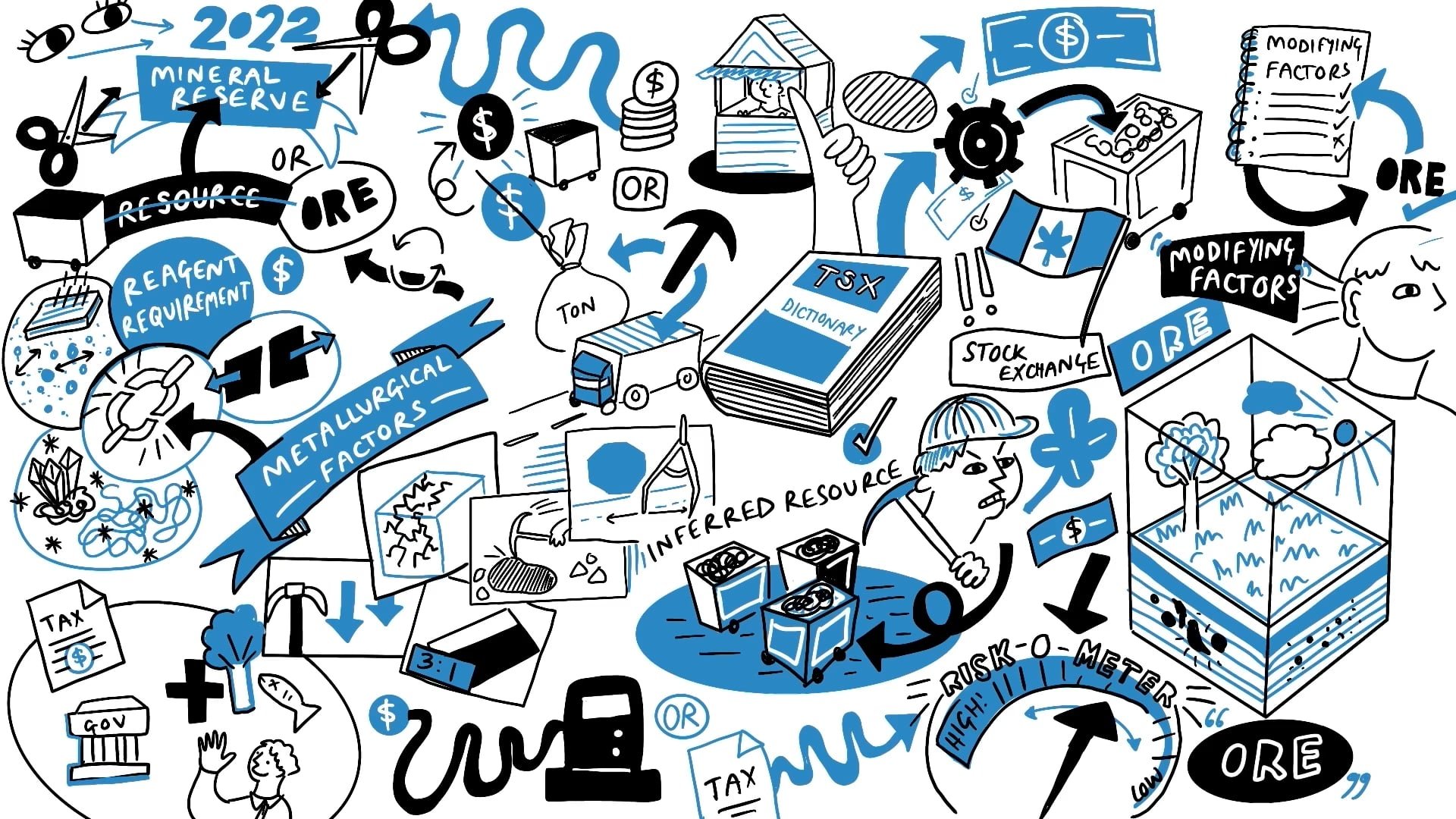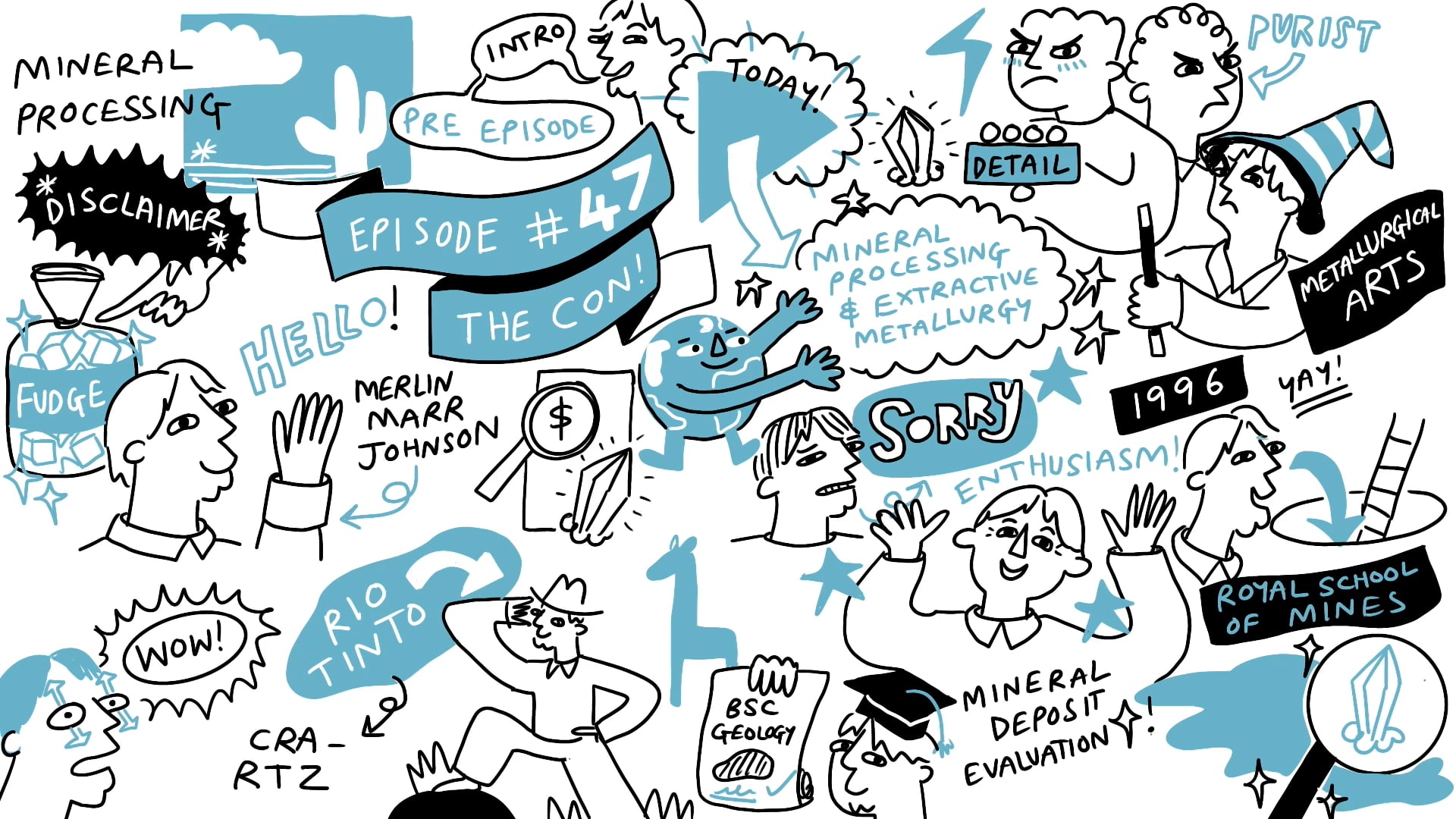Funding: Historical Financing, Cash Flowing Juniors & Burn Rate

More episodes
Transcript
Historical Financing
Another thing to consider when you're looking at how the company was financed in the past and how it will be financed in the future is to understand the company's structure and to look at the number of shares out. It matters enormously how many shares there are in existence. To understand how the company will be funded in the future and how it's funded now, you really need to look at the history and understand the circumstances where there is a track record of serial issuance of shares without commensurate price rises. This is particularly challenging for a company which has been in existence for over 10 years because all of those companies would have been caught up in the boom and the bust from 2011 onwards. During that period, from 2011 to 2017, most equities saw 98% or more value destruction. Some companies can have a very large number of shares issued indeed.
If you look at the Australian style company, they've often got billions of shares in issue. If this is the case, it's worth seeing whether the company has had the maturity to regroup, revalue, refocus and rebuild an investment case. Focus perhaps on the last few years, the recent management team, perhaps two to three years back and see whether there is a recent history of value creation. Remember that issuing shares is not dilutive if the share price goes up. If you use capital properly, if you take one dollar and you use that to create two or five dollars worth of value and it's reflected in the price, that's fine. That's a really good use of funds, which demonstrates that the management team has had a sensible and appropriate access to capital and use of that capital.
What is more problematic is if the company time and again issues stock, spends the money, but value is not accrued. You've taken one dollar and spent it and you've only generated one dollar's worth of value and you're running to stand still. The only thing that happens there is management and advisors get paid in which case everybody's losing apart from the management, who are winning by taking their salary.
Unfortunately, this is the story of all those exploration companies that don't make a transformational discovery. And since transformational discovery are as rare as hen's teeth, that means most exploration companies are serial destroyers of value.
In short, the track record of how the company has been funded in the last few rounds is really significant. Ask management, what do the last funding rounds look like?
Access to senior management
Where is Matt when you need him? It is an easy thing to check for yourself. Go back to the annual reports and look at the funding history. What has the management team done over time? If you've got a new CEO, a professional who's been hired, it's worthwhile looking at the previous company where that CEO was working. Don't forget to check the remuneration page as well and watch out for egregious performance rights packages and the like.
I said in a previous episode that I wouldn't focus on companies which have got cash flow, but it is worth mentioning that cash flow renders companies so much more powerful. That is why the producers are in a different category to the non-producing juniors. When capital markets dry up and when the juniors sector can no longer access equity capital easily, producers can mine their own money, particularly if it's gold. You're just creating money from the rocks.
But beware the company that says, oh, we've got this great exploration play. We're finding it difficult to access the capital markets, but we can see that over here, there's a small mine that we can target to produce cashflow and we can operate this dump leach or vat leach project or this little mine here. It's extremely rare for it to work because a small operation takes just as much time to manage as a bigger operation and it will suck in all of the management time. A management team will spend its life running a small mine which has got no relevance to shareholders.
And the reason why people invest in a smaller exploration company is not so that they can run a small mine, but so that the team can discover a big deposit. Because that is where you are going to get ten times on your value. If you come across a company saying that they're going to start small to fund exploration to self-fund, generally I would walk away. In fact, didn't I in the previous strategy episode advise you to run away in that case? So - take your pick, run or walk away and just don't get involved.
There are some rare cases where you can get a funded explorer. You can get a company with a royalty stream or you can get a company with a subsidiary doing something else, whether it's a drilling company or some other kind of activity which is so far away from the main objective of finding a major deposit that it doesn't dilute management's attention. But, of course, you have to be aware of mission creep. What is the real business here? Are you making money from exploration or is your bandwidth invested on a small business?
This ties in with the strategy conversation from earlier episodes where essentially if your exploration team has a good target, a good geological thesis and a good approach to an asset, you can generally find backers to support a major discovery or the potential for a major discovery. This is the reason why junior companies are doing this. They are exploring for that transformational discovery, the 10-bagger.
Burn Rate.
Another aspect of funding is that one has to fully understand what the money will cover. You need to look at the burn rate and again I'm coming back to the G&A package. When a company says it's going to create value and have a wonderful future, you have to realize that exploration companies are research and development companies, they're R&D. They need to spend a significant amount of money on a study, on drilling etc. and the aim is to take one dollar and to turn it into two or five or ten dollars. To get value through an investment, it's imperative to look what they will be doing with their money. The use of funds.
The most important thing is that the management team needs to be able to clearly state what it's trying to do with its dollars. Is it going to invest in the ground? What are its goals with that investment amount? Will it get to the next catalyst or the next value milestone? If
you've got a deposit with a hundred drill holes in it, and it was raising money to do another 10 drill holes, that won't materially change the value of that asset. So is that material? As an investor, you need to question what the next catalyst is and where the next funding ground is going to come from.
And you need to look ahead two to three funding rounds. If a company is going to need a fund a feasibility study to find a resource or to complete a drill out, the key is will the money that they're raising now drive it up the value curve to get to the next catalyst? Is there enough so they've got a little bit left over as better funded companies are always better valued than companies which are running on empty? Better funded companies have a buffer from shocks and more options to juggle or shuffle the cards when the situation changes. And you never want to be raising money when you've got nothing in the kitty. You don't want to be running on empty when you go out to the market to raise fresh capital because the market will punish you.
Coming back to G&A, it's always worth looking at the G&A because if a company is raising say $5 million or it's got $5 million to spend and the G&A is $3 million, walk away. You've got to question the rationale for owning shares and listed companies basically that are raising a million bucks or less. That's barely a homeopathic dose of capital and not the shot in the arm that's needed to deliver results.
And if you're looking at a 200 million dollar company you can be pretty sure that the team is getting paid some decent salaries no matter what they say. Remember that it's a great industry in which to work. Exploration is pioneering and exploration, development and mining makes a crucial contribution to society. Most of us really enjoy the work and bring key expertise to the company or to the industry. Consider me old-fashioned but I believe that professionals should get paid well for delivering value to shareholders. Fair play to fair pay. But I guess I would say that I would say that wouldn't I? Still, you do have to avoid the mickey takers because there are some jokers out there on huge salaries whether they're delivering value to shareholders or not. You don't need that in your life so it's always worth looking at the G&A and walking away if it's too egregious. I've seen it too many times. Management teams that sanction huge pay packages, they fundamentally don't have shareholders interests at heart they're just looking out for themselves. The lifestyle company. The playbook is predictable and spoiler alert - it doesn't end well for shareholders.
I do come back though to professionals who do a good job. They may walk away with a good bonus or a payday when the company gets taken out. But if every shareholder has made money along the way, or at that point, it is fair cop to them, I reckon.
Proportionality of funding.
Finally, when we talk about a well-funded company, it's worthwhile trying to keep things proportional. Sometimes a company can raise a huge amount because there's a change in the market. We saw this a few times in 2019 and 2020. And in fact, one earlier stage development company, which was doing a resource drill-out, raised $80 million and it was almost forced to take the money from investors. It's important to keep your funding proportional to where you are in your development cycle. Too much money can lead to some short-term poor decisions where they think, wow, we've got this money, we better
move quickly. And they start pulling out all the drill rigs. They're producing vast amounts of data and they simply don't have the bandwidth within the company to handle that flow of data. So you can get wasted drilling, which is a waste of capital and that shouldn't happen. Having said that, it's always nice when you are in an exploration company to have money to hand. So perhaps I'm just a little bit green around the gills about that.
Changing the subject slightly, let's look at how things are actually funded. Looking at startups, for example. For a new company to be funded, let's say you pick a name and you pick up a deal. What you're looking for is money, an idea and some champions. You want to de-risk the idea. If it's private, you can pick up a deal. And typically it's very rare to see a completely fresh exploration story. Typically the private startups that are done, these are restructuring, repackaging or reappraising an older asset where previous shareholders got wiped out and they're bringing in new professionals. It's typically a retread. In the first instance, you get the champion, the money and the idea. And that comes from your network. Occasionally you'll get some funds backing a particularly good geologist or a particularly good manager. They'll have a network, or you will have a network, of people who've made money on the last deal. They'll be supporters, people who follow the leadership, and you might get involvement of a few high net worths. Someone who'd made money on a mining deal beforehand might employ a younger professional to do the running for them.
The money that gets into these early stage companies is very well informed, quite smart, and it's usually taken out quite quickly when the share price starts stabilizing, when the value of the company starts maturing to the point where it begins to stabilize. Often the people who put the package together get paper on the inside, they get broker warrants and they're issued with almost free stock and this actually starts to become a bit of a problem. You can see some sharp practice, some perhaps nasty tricks, some unethical behaviour. I've seen people doing what I would call inside papering where directors issue themselves stock in an unnamed holding so that when it goes public they can sell without being seen to be selling and they can take money out without actually alerting the market to the fact that they're selling. It's completely illegal, but I've seen it happening and it's regrettable. And just for the record, I don't get involved in that.
Vancouver, AIM, Australia, Toronto, no matter where you are, there are cases of malpractice. People issuing free paper to mates. There are some rip-off merchants out there and if you've got a sniff of that, avoid it. If it's too good to be true, it probably isn't true. I would urge investors again to take their time. Don't make decisions in a hurry. Let things bed down and don't rush into the latest new deal because other people are doing it. Unless they're really offering quality in terms of the team and the asset, perhaps, but it basically takes time to build up trust. It takes time to build up a proper network and to get institution involves. Try not to be hasty when making your investment decisions.
Let me shed a bit more light on the “bull market warrants financing model”. In case you're unfamiliar with this model, here's how it works. In a bull market, stock prices tend to go up. Therefore a CEO calls his broker buddies and they do a unit financing which is stock plus a warrant. Either a half warrant or a full warrant. The brokers call their mates and they cobble together that the raise at 5 or 10 million bucks, pick your currency, whatever, which is locked
up for 4 months. And that is the hold period. Given that it's a bull market, there's every chance that the stock will be trading at a high level in 4 months.
And once the hold period is over, everyone sells their freely trading stock, hopefully for a profit as it's a bull market. And they keep the warrant, whether it's a half warrant or a full warrant, in their back pocket. And they use the funds from selling the proceeds from the sale of the stock to invest in the next unit offering. In this way, anyone who's on the inside of the magic circle gets to build up an ever-increasing portfolio of warrants, pretty much for free, which in a bull market will become a valuable portfolio. This process is largely risk free in a bull market, and it is always possible that one of the companies will actually make a real discovery, in which case everyone makes out like bandits.
Rinse and repeat.
This is not a credible list of expert shareholders that will back a company team investment through a few bumps in the cycle. These are flaky, fair-weather investors that will abandon the company as soon as the market turns. Think twice before investing in companies offering units.
It's not necessarily an out and out turn off, but you do have to look at the quality of the shareholder register carefully if you see those warrants being offered.
Thank you very much.









































.jpg)
.jpg)
.jpg)
.jpg)















